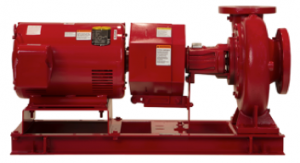Morton Grove, Ill. — June 29, 2015 — Xylem Inc., a leading global water technology provider, today introduced an online destination for mining professionals, showcasing the company’s wide range of system solutions and application expertise to solve the most challenging water issues in the mining industry. The microsite is designed to help mining professionals address water accessibility, transport and quality challenges in even the most remote regions, where water can either be overabundant or scarce.
The online resource, mining.xylem.com, provides information on solutions to support open pit mines, underground mines and material processing.
“Global mining operators require reliable service, high-quality products and fast response from their solutions providers,” said Nate Maguire, Americas Director of Industry and Agriculture for Xylem’s Applied Water Systems business unit. “Our advanced technologies and experience in the industry enables us to deliver on these needs across myriad mining applications and in a highly efficient manner.”
Xylem’s broad portfolio includes industry-leading brands – Godwin, Goulds Water Technology, Flygt, Lowara, MJK, SonTek, YSI, Wedeco, A-C Fire Pump and Leopold – and addresses a host of mining applications, including:
- Submersible water
- Packaged Biological Treatment
- Leaching
- Open Pit Dewatering
- Grinding Mill
- Fire Suppression
- Floating Water Monitoring
- Environmental Monitoring
- Source water
- Underground Dewatering
“The new online resource was created to help customers better understand Xylem’s portfolio of solutions and services that enhance water and fluid handling efficiency, save energy, curtail maintenance costs and reduce downtime — all factors that are critically important in the mining industry,” Maguire said.
To learn more, visit http://mining.xylem.com
About Xylem
Xylem (XYL) is a leading global water technology provider, enabling customers to transport, treat, test and efficiently use water in public utility, residential and commercial building services, industrial and agricultural settings. The company does business in more than 150 countries through a number of market-leading product brands, and its people bring broad applications expertise with a strong focus on finding local solutions to the world’s most challenging water and wastewater problems. Xylem is headquartered in Rye Brook, New York, with 2014 revenues of $3.9 billion and approximately 12,500 employees worldwide. Xylem was named to the Dow Jones Sustainability Index for the last three years for advancing sustainable business practices and solutions worldwide.
The name Xylem is derived from classical Greek and is the tissue that transports water in plants, highlighting the engineering efficiency of our water-centric business by linking it with the best water transportation of all — that which occurs in nature. For more information, please visit us at www.xylem.com.
###
Contact: Amanda Holloway
+1.224.500.0742
Amanda.Holloway@xyleminc.com



















